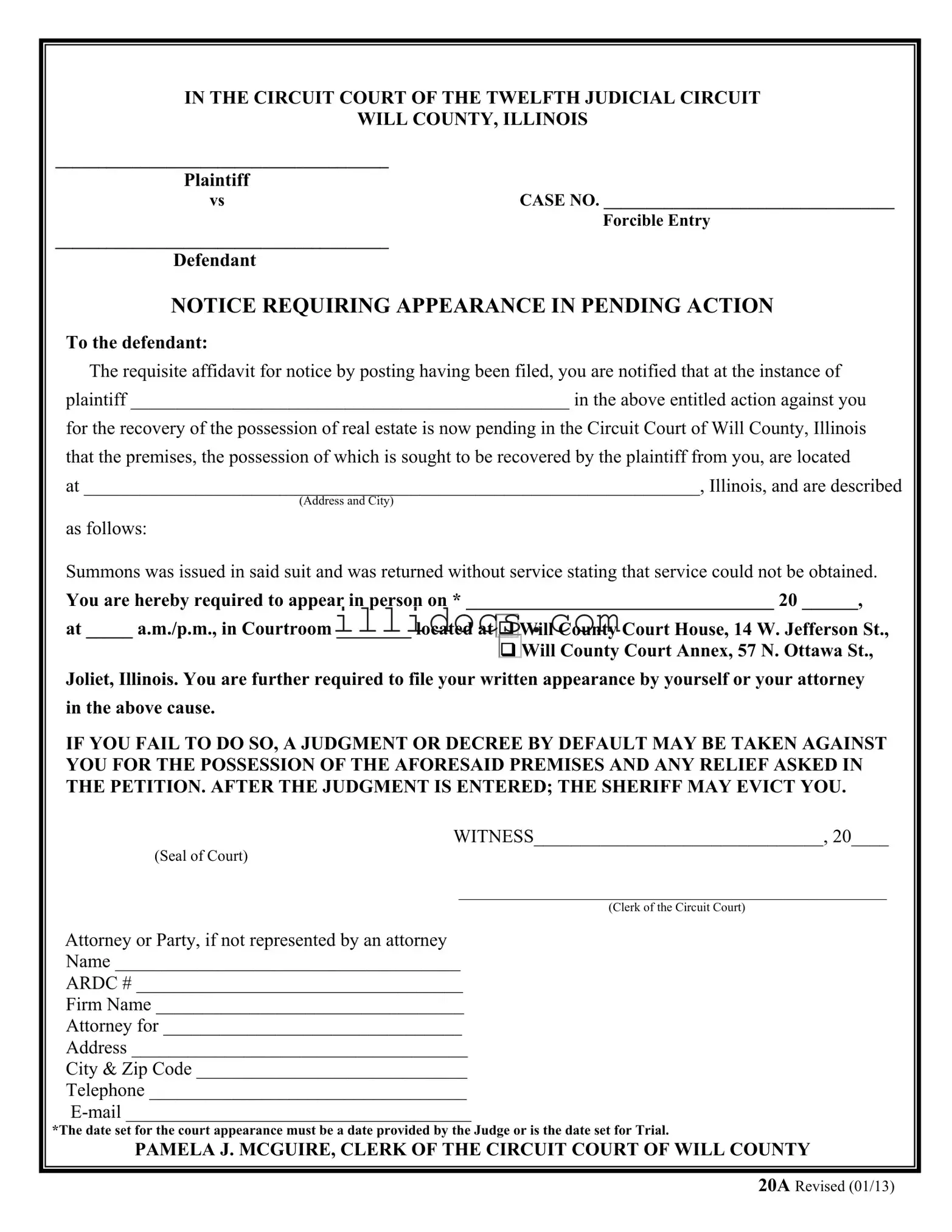What is the Illinois 20A form?
The Illinois 20A form is a legal document used in the Circuit Court of Will County, Illinois. It serves as a notice requiring a defendant to appear in court regarding a forcible entry action, typically related to eviction proceedings. This form informs the defendant of the pending case and the necessity of their appearance in court.
Who is the plaintiff in the Illinois 20A form?
The plaintiff is the individual or entity that has initiated the legal action against the defendant. In the context of the Illinois 20A form, the plaintiff seeks to recover possession of real estate from the defendant.
What information must be included in the Illinois 20A form?
The form requires specific details, including the names of the plaintiff and defendant, the case number, the address of the property in question, the date and time of the required court appearance, and the courtroom location. Additionally, it includes a notice about the consequences of failing to appear.
What happens if the defendant does not appear in court?
If the defendant fails to appear as required, a judgment or decree by default may be issued against them. This could result in the plaintiff being granted possession of the property without further input from the defendant. Following the judgment, the sheriff may proceed with eviction.
How is the defendant notified of the Illinois 20A form?
Where is the court appearance scheduled?
The court appearance is scheduled at the Will County Court House, specifically at the address of 14 W. Jefferson St., Joliet, Illinois. The exact courtroom number will be provided on the form.
Can the defendant appear in court without an attorney?
Yes, the defendant can appear in court without an attorney. However, they must file a written appearance either personally or through their attorney. It is advisable to seek legal counsel to navigate the complexities of the case.
What is the significance of the date on the Illinois 20A form?
The date on the form is critical as it indicates when the defendant must appear in court. This date is set by the judge or corresponds to the trial date. It is important for the defendant to note this date to avoid default judgment.
What should the defendant do if they receive an Illinois 20A form?
Upon receiving the Illinois 20A form, the defendant should take immediate action. They must prepare to appear in court on the specified date and consider filing a written appearance. Consulting with a legal professional may also be beneficial to understand their rights and options.
Is there a fee associated with filing an appearance?
Typically, there may be a fee associated with filing a written appearance in court. The amount can vary based on local court rules. It is advisable to check with the Circuit Court of Will County for the specific fee structure.
